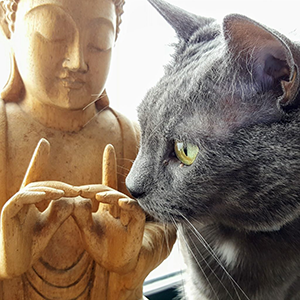
MY PATH OF DISCOVERY:
WORK AND LOSING MYSELF
In medical school I couldn’t quite decide between medicine and psychiatry so I chose the psychiatric sub-specialty, which offered the best compromise; Consultation-Liaison (CL), and in the 1990’s that training, hospital based, introduced me to the needs of People with AIDS.
The first job I landed, after my training, was in a Community-Based HIV/AIDS Program. I began an unplanned 14 year immersion, during the time when that infection was, more often than not, a death sentence.
Although I loved the patients and staff, and the work and titles stroked my ego a bit, it was exhausting. I worked long hours and occasional weekends; was the primary psychiatrist for over 100 patients, ran a small mental health program, kept a part-time private practice, supervised staff, was an active member of the local NYC HIV/AIDS Committee of the American Psychiatric Association (APA), taught at other HIV Community Programs, occasionally lectured with the APA group, and had a hospital teaching affiliation.
After a while I knew I was unhappy, but I didn’t know how to manage it. My few attempts to quit didn’t hold until, like many of us, one triggering event pushed me past my limit.
FINDING THE PRESENT AND MYSELF
Only after leaving did I have a moment to see that I hadn’t actually been ‘present’ in my own life for years. I was an empty shell, burnt-out. It was a form of depression that I had suffered for years but hadn’t recognized because, towards the end, I hadn’t felt obviously sad per se. I couldn’t smile or interact with people in a positive way. Really. I could not smile.
Things needed to change. I needed to change. I took a yoga class. It felt good. And I realized it was good for me. So, I made a contract with myself: No matter what, I would commit to this. I would push myself to do what felt like the hardest thing I had ever tried to do: prioritize myself.
TAKING A BREATH AND LIBERATION
My next progressions came almost simultaneously; my yoga teachers introduced me to meditation and the teachings of the Buddhist nun, Pema Chödrön. These ‘tools’ immediately caught my attention. They resonated with me. I had in the distant past ‘needed’ and successfully used antidepressants and psychotherapy. Both were very helpful, but neither had seemed to have the deep or lasting effect, for me, that embracing Buddhist philosophy had. It just made sense: If this, then that. It might take a lifetime of practice and patience but at least I had a compass, a map, and directions.
Breathwork (Pranayama) soon followed. I was amazed at how powerful the simple act of working with the breath felt. And it was free!
After a few years of dedicated effort I was feeling so very much better than I ever had. I had experienced a 180-degree shift in my life; I was smiling, active, was spending time with friends, and was in a relationship. Problems now seemed workable. States of anxiety or depression could be more quickly smoothed.
SHARING WHAT I HAVE LEARNED
The next compelling thing for me was to share these techniques in my Private Practice. But first I needed to know, to the extent possible, if the techniques were backed by research. And I needed a broader perspective.
So, I began the path that I am on still with great joy: Bringing my full medical curiosity to this field. I devour with passion the books written by the experts in the field, especially those that touch upon the science of the brain. And when possible I take courses and attend lectures, (Particular joy: attending ‘The First International Symposia For Contemplative Studies’ in 2012 and getting to meet and hear some of the Rock-stars of Buddhism. And my greatest gift, taking a course from Pema Chödrön in person.)
I am still a work in progress. Not yet enlightened and that’s OK. I continue to trip and fall and make mistakes. I stray from the path constantly, but never as far or as dark as I once did. And now I’m always confident I have the tools to find my way back.
(*Treatment of psychiatric disorders in complex medically ill patients.)